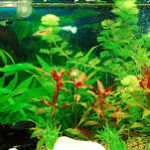Understanding Damaged Hair and Its Needs
What Causes Hair Damage?
Hair damage occurs due to various factors, including excessive heat styling, chemical treatments, environmental stressors, and improper hair care routines. When hair becomes damaged, the outer protective layer, known as the cuticle, wears down, leading to dryness, breakage, and frizz. Understanding the root cause of damage is the first step in selecting the right conditioner to restore hair health.
Heat tools such as flat irons, curling wands, and blow dryers strip moisture from hair strands, making them brittle. Chemical processes like coloring, perming, and relaxing weaken the hair structure, leaving it prone to split ends. Environmental factors such as sun exposure, pollution, and hard water further contribute to damage by dehydrating hair and causing oxidative stress.
Identifying Your Hair Damage Level
Not all damaged hair is the same. Some people experience mild dryness, while others struggle with severe breakage. Recognizing the level of damage helps in choosing a conditioner with the right intensity of repair.
For mildly damaged hair, signs include slight frizz, dullness, and occasional tangles. Moderately damaged hair may have noticeable split ends, increased breakage, and difficulty retaining moisture. Severely damaged hair often appears extremely dry, with visible breakage, thinning, and a rough texture.
A simple test to assess damage is the strand test. Placing a single hair strand in water—if it sinks quickly, it is highly porous and damaged. If it floats, the hair is healthier. This test helps determine how much hydration and protein the hair requires.
Key Ingredients for Repairing Damaged Hair
Choosing a conditioner with the right ingredients is crucial for repairing damaged hair. Different components target specific issues, such as moisture loss, protein deficiency, or cuticle damage.
Hydrating ingredients like shea butter, argan oil, and glycerin help restore moisture in dry, brittle hair. These components seal the cuticle, preventing further water loss and improving elasticity. Protein-rich ingredients such as keratin, collagen, and amino acids rebuild the hair’s internal structure, strengthening weak strands.
For chemically treated hair, ceramides and fatty acids help repair the lipid barrier, reducing porosity. Antioxidants like vitamin E protect hair from environmental damage, while silicones provide temporary smoothing effects, making hair more manageable. However, excessive silicone use can cause buildup, so moderation is key.
How Conditioners Work on Damaged Hair
Conditioners function by coating the hair shaft, filling in gaps in the cuticle, and providing essential nutrients. They reduce friction between strands, preventing tangles and breakage during brushing. For damaged hair, a good conditioner should penetrate deeply rather than just sitting on the surface.
Leave-in conditioners offer prolonged hydration, while rinse-out conditioners provide immediate softening effects. Deep conditioners, used weekly, deliver intensive repair by infusing hair with nourishing ingredients. Understanding these variations ensures that the chosen product aligns with the hair’s specific needs.
By assessing damage levels and selecting conditioners with targeted ingredients, individuals can begin the journey toward healthier, stronger hair. The next part will explore how different hair types influence conditioner selection.
Matching Conditioner to Hair Type and Texture
How Hair Type Affects Conditioner Choice
Hair type plays a significant role in determining the right conditioner. Straight, wavy, curly, and coily hair textures have different needs, and using the wrong product can lead to further damage or excessive heaviness.
Straight hair tends to get oily faster, so lightweight conditioners with humectants like panthenol work best. Wavy hair benefits from moderate moisture to enhance definition without weighing it down. Curly and coily hair requires richer, cream-based conditioners with butters and oils to combat dryness and maintain curl pattern integrity.
Fine vs. Thick Damaged Hair
Fine hair is more susceptible to product buildup, so volumizing or lightweight conditioners are ideal. Heavy creams can make fine hair limp and greasy. Look for hydrolyzed proteins that strengthen without adding excess weight.
Thick hair, on the other hand, can handle denser formulations. Shea butter, coconut oil, and avocado oil provide the deep hydration that coarse, thick strands need. Without adequate moisture, thick hair becomes unmanageable and prone to breakage.
Color-Treated and Chemically Processed Hair
Bleached, dyed, or relaxed hair has unique needs. Sulfate-free conditioners prevent further stripping of color and natural oils. Purple or blue toning conditioners help neutralize brassiness in blonde or gray hair, while bond-repairing conditioners (with ingredients like olaplex) restore broken disulfide bonds in chemically treated hair.
Protein overload can make colored hair brittle, so balancing protein and moisture is essential. A conditioner with a mix of amino acids and hydrating agents ensures flexibility and strength.
Scalp Health and Conditioner Selection
Damaged hair often comes with scalp issues like dryness, flakiness, or excess oil. A healthy scalp promotes better hair growth, so choosing a conditioner that doesn’t clog pores is vital.
For dry scalps, conditioners with tea tree oil or aloe vera soothe irritation. Oily scalps benefit from clarifying conditioners with apple cider vinegar or salicylic acid to prevent buildup. Those with sensitive scalps should avoid harsh sulfates and fragrances that trigger inflammation.
Understanding hair type and texture ensures the conditioner not only repairs damage but also enhances natural hair characteristics. The next section will discuss different conditioner formulations and their benefits
Understanding Conditioner Formulations and Their Benefits
Different Types of Conditioners for Damaged Hair
Not all conditioners are created equal. Depending on the level of damage, certain formulations work better than others. The main types include rinse-out conditioners, leave-in conditioners, deep conditioners, and protein treatments. Each serves a unique purpose in hair repair.
Rinse-out conditioners are the most common and are used after shampooing. They provide instant detangling and softness but are not as intensive as other types. For mildly damaged hair, a good rinse-out conditioner with hydrating ingredients can be sufficient. However, severely damaged hair may need additional treatments.
Leave-in conditioners offer prolonged moisture and protection. They are applied to damp hair and not washed out, making them ideal for daily use. These are especially beneficial for curly or coily hair types that lose moisture quickly. They also provide heat protection when using styling tools.
Deep conditioners are highly concentrated treatments designed to penetrate the hair shaft. They are typically left on for 15-30 minutes or used with heat for better absorption. People with moderate to severe damage should use deep conditioners at least once a week to restore elasticity and strength.
Protein treatments are specialized conditioners that rebuild broken keratin bonds in the hair. They are essential for over-processed or chemically treated hair but should be used in moderation (once every 2-4 weeks) to avoid protein overload, which can make hair stiff and brittle.
Key Ingredients to Look for in Repairing Conditioners
The effectiveness of a conditioner depends largely on its ingredients. For damaged hair, certain components are more beneficial than others.
Humectants like glycerin and hyaluronic acid attract moisture from the air into the hair, preventing dryness. These are great for frizzy or dehydrated hair but may not be ideal in extremely dry climates where they can draw moisture out of the hair instead.
Emollients such as shea butter, jojoba oil, and argan oil smooth the hair cuticle, reducing friction and breakage. These are especially useful for thick, coarse, or curly hair that tends to be rough and prone to tangling.
Proteins (keratin, collagen, wheat protein) help fill in gaps in the hair shaft, repairing damage from heat and chemicals. However, too much protein can lead to stiffness, so it’s important to balance protein-rich conditioners with moisturizing ones.
Ceramides and fatty acids strengthen the hair’s lipid layer, which is often compromised in damaged hair. These ingredients are excellent for chemically treated or high-porosity hair that loses moisture quickly.
Silicones (like dimethicone and amodimethicone) provide temporary smoothing and shine by coating the hair. While they make hair more manageable, they can cause buildup over time, so sulfate-free clarifying shampoos should be used occasionally to remove residue.
How to Properly Apply Conditioner for Maximum Repair
Simply slathering conditioner onto hair isn’t enough—proper application ensures that the product works effectively.
For rinse-out conditioners, hair should be gently squeezed to remove excess water before application. This allows better absorption. The conditioner should be applied from mid-length to ends, avoiding the scalp (unless it’s a scalp-specific formula). Massaging it in with wide-tooth comb distribution ensures even coverage. Leaving it on for 2-5 minutes before rinsing with cool water helps seal the cuticle.
Leave-in conditioners should be applied to damp (not soaking wet) hair to prevent dilution. A small amount is sufficient—too much can weigh hair down. Focusing on the ends prevents greasiness at the roots.
Deep conditioners work best when hair is slightly damp and covered with a shower cap or warm towel. The heat opens the cuticle, allowing deeper penetration. Rinsing with lukewarm water ensures nutrients are locked in without stripping moisture.
Common Mistakes When Using Conditioner on Damaged Hair
Many people unknowingly worsen their hair damage by misusing conditioners. Some common mistakes include:
- Applying conditioner to the scalp – This can clog pores, leading to buildup and irritation. Conditioner should focus on mid-lengths and ends.
- Using too much product – Overloading hair with conditioner can make it greasy and limp. A coin-sized amount is usually enough for medium-length hair.
- Rinsing with hot water – Hot water strips moisture and opens the cuticle too much, leading to frizz. Cool or lukewarm water is best.
- Skipping regular deep conditioning – Damaged hair needs consistent care. Skipping treatments slows down repair progress.
- Ignoring protein-moisture balance – Too much protein makes hair stiff, while too much moisture can cause hygral fatigue (overly swollen, weak hair).
By understanding different conditioner types, key ingredients, and proper application techniques, individuals can maximize their hair repair efforts. The final section will discuss long-term maintenance and additional treatments for keeping damaged hair healthy.
Long-Term Hair Repair and Maintenance Strategies
Creating a Sustainable Hair Care Routine for Damaged Hair
Repairing damaged hair is not an overnight process—it requires consistent care and the right habits. A well-structured routine ensures that hair remains healthy, strong, and less prone to further damage.
The foundation of any good hair care routine is a gentle shampoo and conditioner duo formulated for damaged hair. Sulfate-free shampoos cleanse without stripping natural oils, while hydrating conditioners replenish lost moisture. Washing frequency depends on hair type: oily scalps may need cleansing every 2-3 days, while dry or curly hair benefits from weekly washes with co-washing (conditioner-only washing) in between.
Weekly deep conditioning treatments are non-negotiable for damaged hair. These intensive masks should contain a blend of proteins, ceramides, and natural oils to rebuild the hair’s structure. Alternating between protein-based and moisture-based treatments prevents imbalance—too much protein can make hair brittle, while too much moisture can weaken strands.
Heat protection is critical for those who style their hair regularly. Before using blow dryers, straighteners, or curling irons, a thermal protectant spray or serum should be applied to minimize heat damage. Lower heat settings (below 350°F) and ceramic/tourmaline tools reduce friction and breakage.
Lifestyle and Dietary Factors That Affect Hair Health
Hair repair isn’t just about external products—nutrition and overall health play a major role.
- Protein-rich diets support keratin production, essential for strong hair. Eggs, lean meats, beans, and nuts are excellent sources.
- Vitamins A, C, D, E, and B-complex promote scalp health and hair growth. Leafy greens, citrus fruits, and fatty fish are great additions to meals.
- Hydration keeps hair supple. Drinking enough water prevents dryness and brittleness.
- Reducing stress helps minimize hair shedding. Practices like meditation, exercise, and adequate sleep improve hair resilience.
Additional Treatments for Severe Damage
For hair that is extremely damaged—due to bleaching, excessive heat, or chemical processing—additional treatments can accelerate recovery.
Bond-rebuilding treatments (like Olaplex or K18) repair broken disulfide bonds within the hair shaft, restoring elasticity and reducing breakage. These are especially useful for chemically treated or over-processed hair.
Scalp treatments improve follicle health, encouraging stronger regrowth. Exfoliating scrubs (with sugar or salicylic acid) remove dead skin and product buildup, while serums with caffeine or peptides stimulate blood circulation.
Trim split ends regularly (every 6-8 weeks) to prevent further splitting up the hair shaft. While trimming doesn’t “repair” damage, it keeps hair looking healthier and prevents tangles.
Common Myths About Repairing Damaged Hair
Several misconceptions can mislead people into ineffective or even harmful hair care practices.
- “Frequent trims make hair grow faster.” Hair growth happens at the scalp, not the ends. Trimming only removes damage—it doesn’t speed up growth.
- “Natural oils can fix all damage.” While oils like coconut and argan oil help with moisture, they cannot repair broken protein bonds or severe chemical damage.
- “Skipping shampoo makes hair healthier.” While reducing shampoo frequency can help dry hair, avoiding cleansing altogether leads to buildup, clogged follicles, and potential hair loss.
- “All-natural products are always better.” Some natural ingredients (like lemon juice or baking soda) can be too harsh and worsen damage.
Final Recommendations for Choosing the Right Conditioner
To summarize, selecting the best conditioner for damaged hair involves:
- Identifying the damage level (mild, moderate, or severe).
- Matching the conditioner to hair type (fine, thick, curly, straight).
- Looking for key repair ingredients (proteins, ceramides, humectants).
- Using the correct application method (focusing on mid-lengths to ends, avoiding scalp buildup).
- Maintaining a long-term care routine (deep conditioning, heat protection, regular trims).
By following these guidelines, individuals can gradually restore their hair’s strength, shine, and manageability. While damaged hair cannot fully revert to its original state, consistent care ensures it looks and feels healthier over time.
Conclusion
Choosing the right conditioner for damaged hair requires understanding the causes of damage, recognizing hair type and texture, selecting the best formulations, and committing to long-term maintenance. With the right products and habits, even severely damaged hair can regain its vitality. Patience and consistency are key—healthy hair is a journey, not an overnight fix. By avoiding common mistakes and following science-backed care methods, anyone can achieve stronger, smoother, and more resilient hair.










